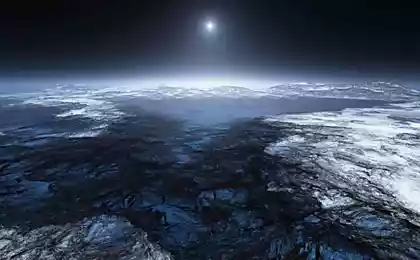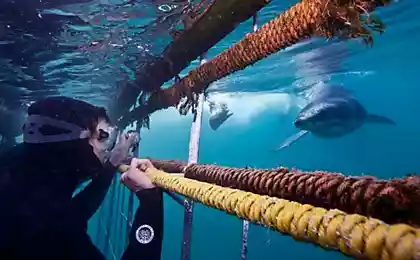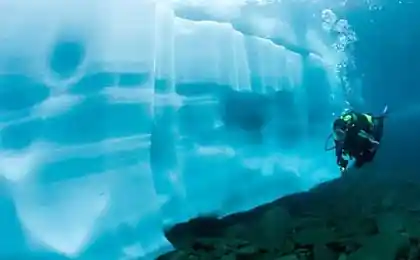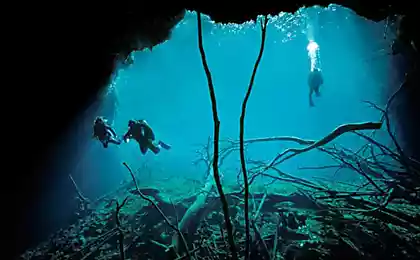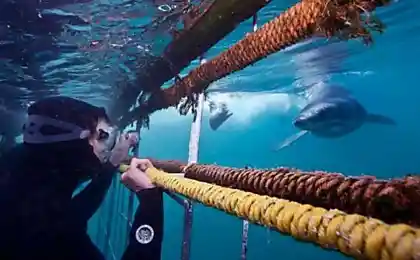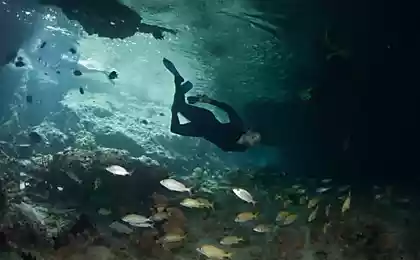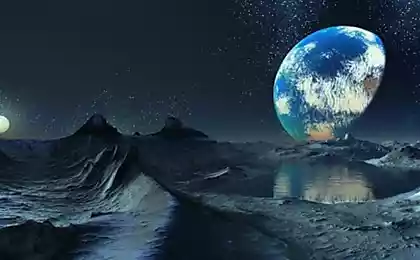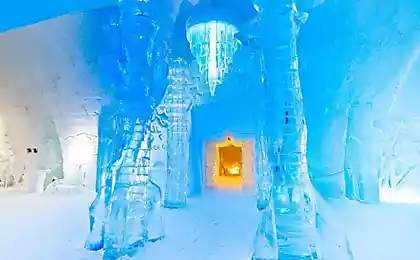697
Ice diving
The southern slope of the Swiss Alps.
More than two thousand meters above sea level.
In just a few days a year is going on here in the wonderful mystery of its uniqueness, born special, unique beauty: in mountain lakes, stone bowls, icebergs are melting - ice blocks, descended from the alpine slopes.
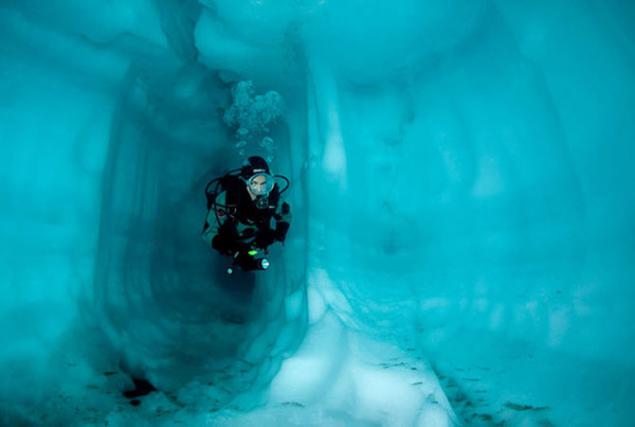
These photos show a beautiful and eerie underwater world of the Swiss alpine lake. These pictures were taken by Franco Banfi, near the southern border with Italy, in the lake Sassoli.
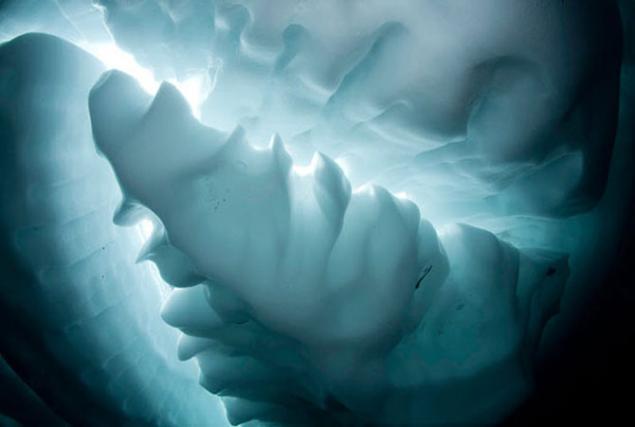
Ice wall under the water with mountains in the background.

Huge ice structures seem simple in comparison with the giants divers, explore the cracks and bends icebergs.
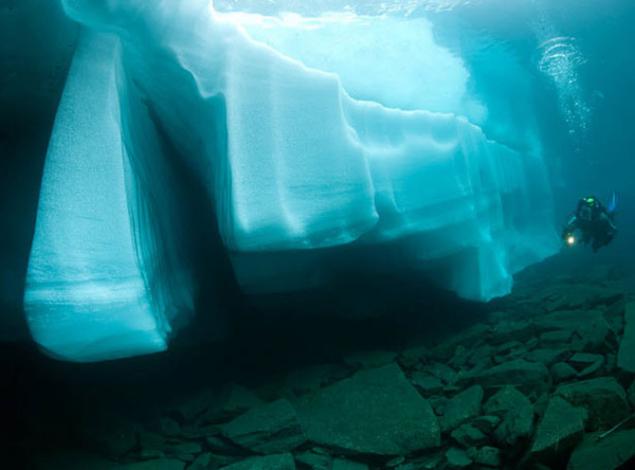
Large ice in the lake, smooth flow of water in unusual shapes. For example, the structure resembles a face peering from the depths of the lake.
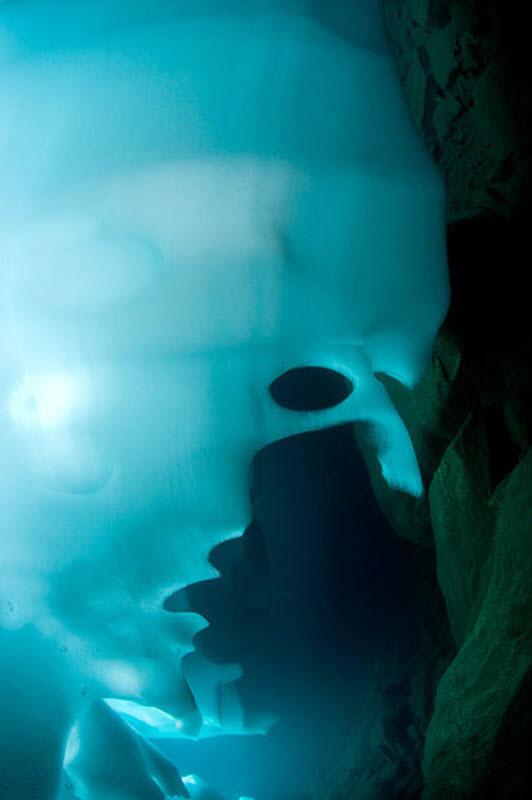
Sassoli lake located at an altitude 2074 meters.
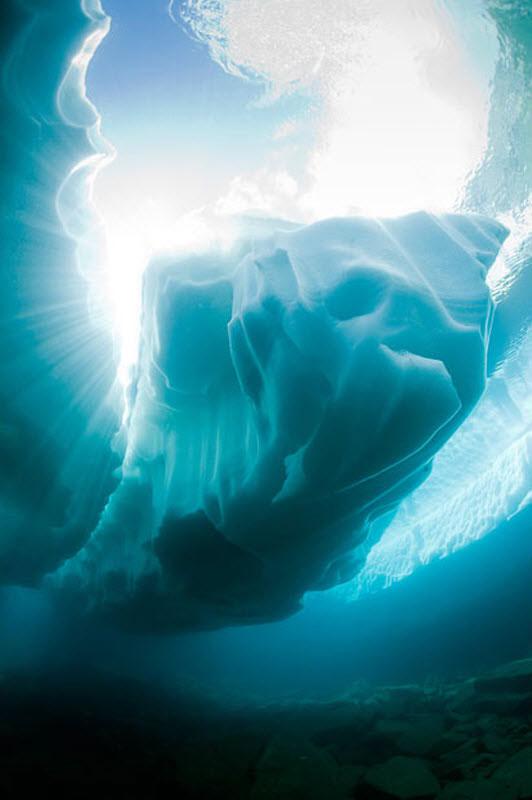
It was formed with the waters of the katabatic alpine peaks.
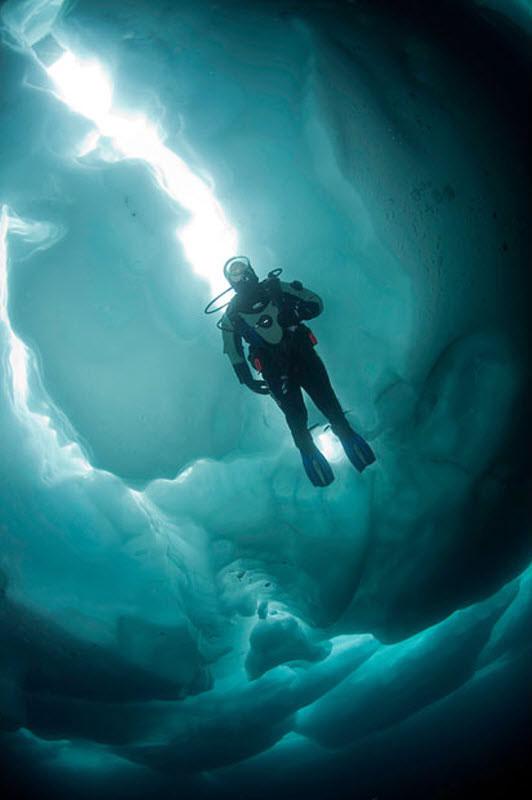
At the bottom of the lake are many clay deposits, covered with rocks and stones got there because of erosion and avalanches during every spring when snowmelt begins.
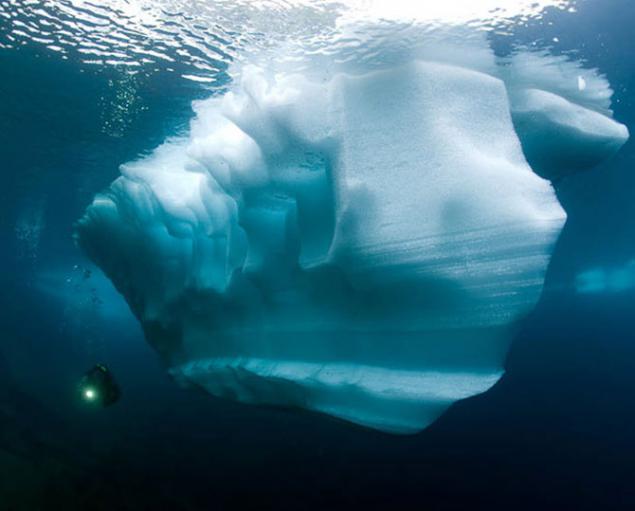
The thick ice shell that covers the lake, is also melting of the pack ice has formed, which in the warm summer weather turns into a cluster of many icebergs floating in the lake until it is fully melted.
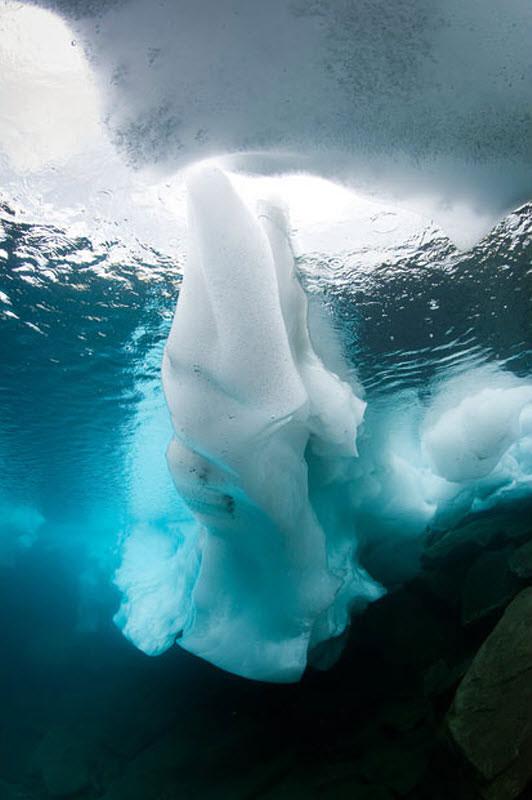
In the Swiss Alps a total area of glaciers more than 4000 square kilometers, total number of glaciers reaches 1 200.
Scuba diver swims in an ice cave in the lake Sassoli, in the Valley of Sambuco, Ticino, Switzerland.

Glaciers and eternal snow are reduced to 2 500-3 200 meters.
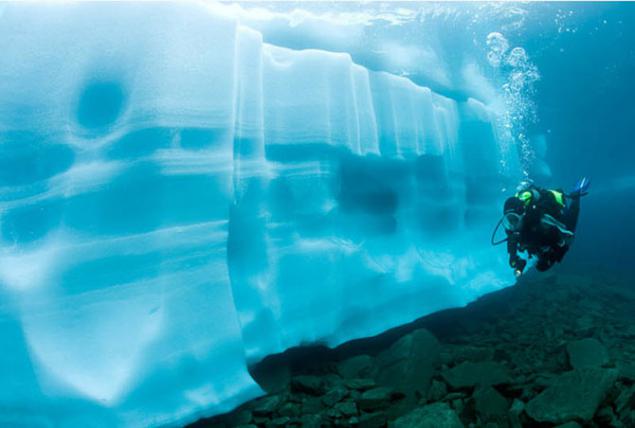
And sometimes, in the icy waters you can meet interesting guests ... Beluga stares at the diver, swim a few meters away from her in the icy waters of the White Sea Karelia.

The diver overcomes the temperature at -10 degrees to swim to the beluga. (approx. so the author)

Beluga trying to eat the camera.
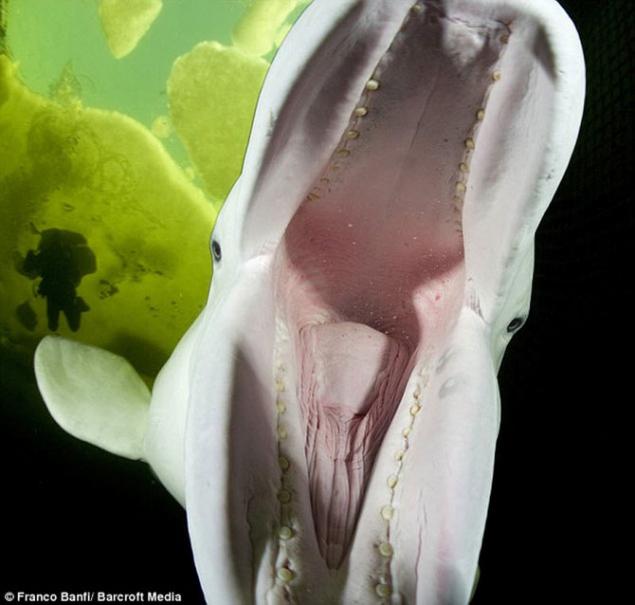
Belugas in this place - in the center of diving in the White Sea - a cross between a wild and a former circus animals who spend some time here, before their release to freedom.
via fresher.ru
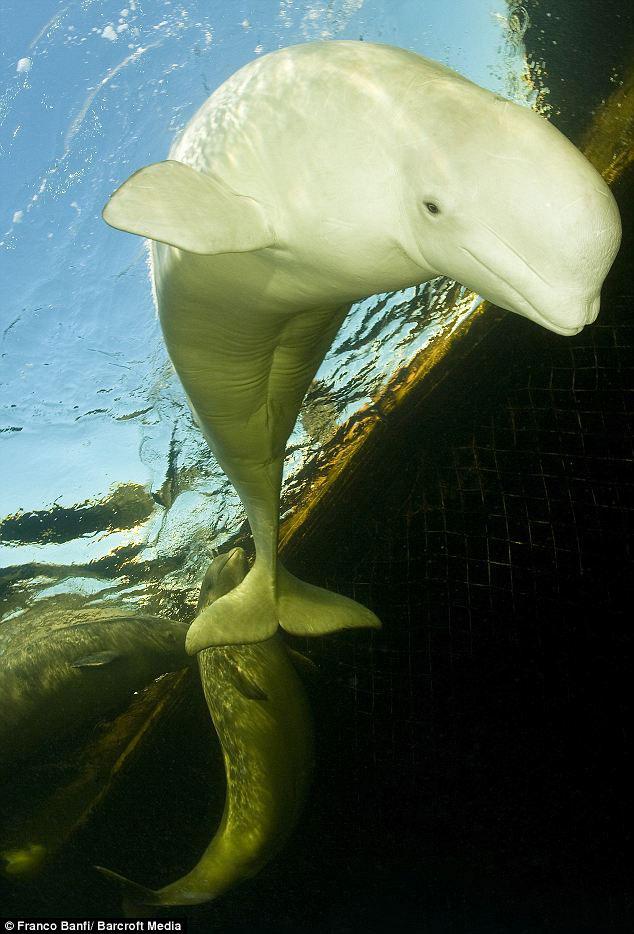
Source:
More than two thousand meters above sea level.
In just a few days a year is going on here in the wonderful mystery of its uniqueness, born special, unique beauty: in mountain lakes, stone bowls, icebergs are melting - ice blocks, descended from the alpine slopes.

These photos show a beautiful and eerie underwater world of the Swiss alpine lake. These pictures were taken by Franco Banfi, near the southern border with Italy, in the lake Sassoli.

Ice wall under the water with mountains in the background.

Huge ice structures seem simple in comparison with the giants divers, explore the cracks and bends icebergs.

Large ice in the lake, smooth flow of water in unusual shapes. For example, the structure resembles a face peering from the depths of the lake.

Sassoli lake located at an altitude 2074 meters.

It was formed with the waters of the katabatic alpine peaks.

At the bottom of the lake are many clay deposits, covered with rocks and stones got there because of erosion and avalanches during every spring when snowmelt begins.

The thick ice shell that covers the lake, is also melting of the pack ice has formed, which in the warm summer weather turns into a cluster of many icebergs floating in the lake until it is fully melted.

In the Swiss Alps a total area of glaciers more than 4000 square kilometers, total number of glaciers reaches 1 200.
Scuba diver swims in an ice cave in the lake Sassoli, in the Valley of Sambuco, Ticino, Switzerland.

Glaciers and eternal snow are reduced to 2 500-3 200 meters.

And sometimes, in the icy waters you can meet interesting guests ... Beluga stares at the diver, swim a few meters away from her in the icy waters of the White Sea Karelia.

The diver overcomes the temperature at -10 degrees to swim to the beluga. (approx. so the author)

Beluga trying to eat the camera.

Belugas in this place - in the center of diving in the White Sea - a cross between a wild and a former circus animals who spend some time here, before their release to freedom.
via fresher.ru

Source:






